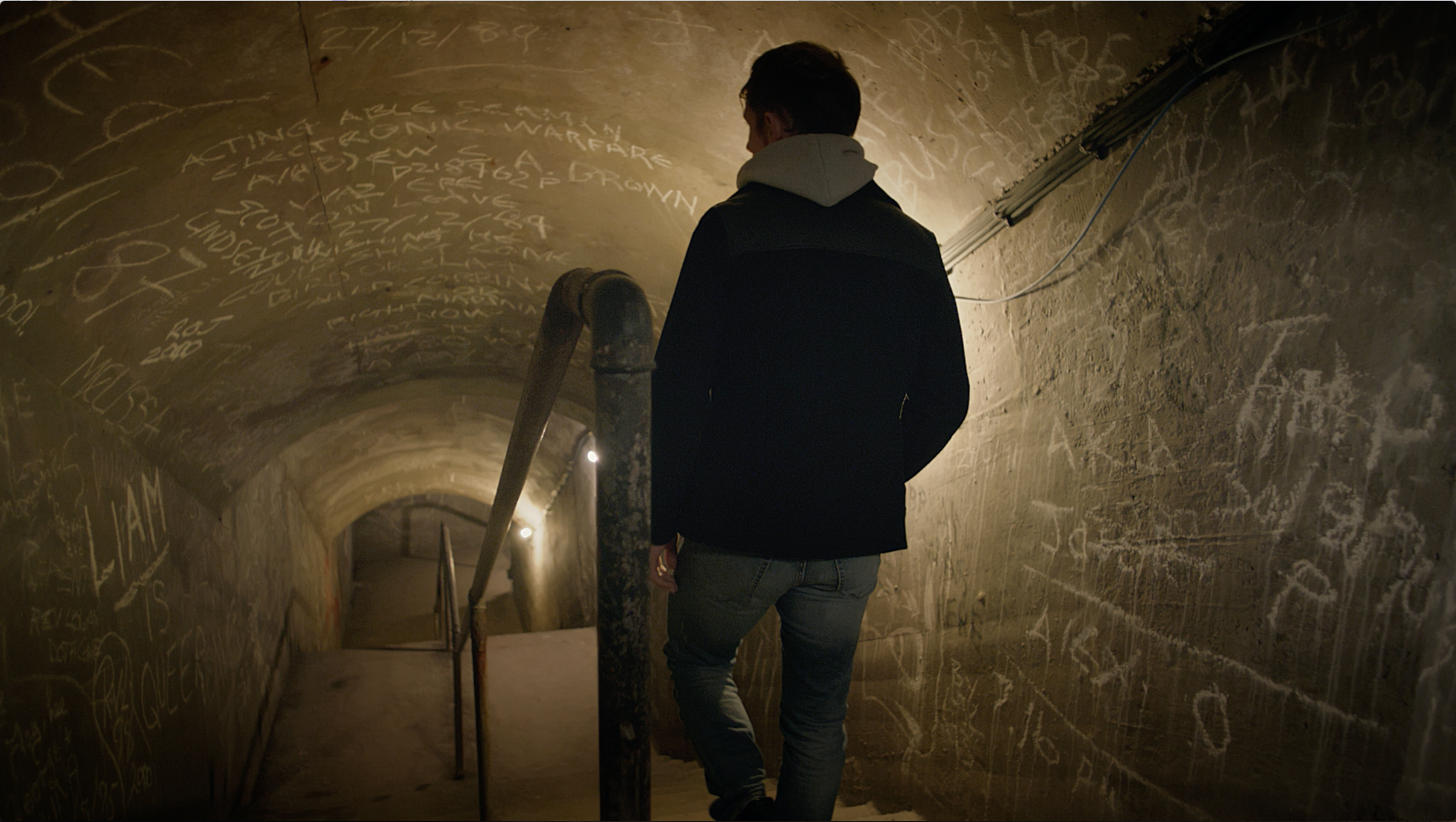IN: Media Practice and Education Volume 19, 2018 – Issue 3: Filmmaking in the Academy
https://doi.org/10.1080/25741136.2018.1519989
ABSTRACT
This article reflects on the authors’ work in investigating how audiovisual practices might represent the experience of disused or ruined structures. With backgrounds in visual and sound practice respectively, the authors have, in their most recent experimental film project Coccolith [UK: Coccolith Productions], conceived the Ramsgate wartime tunnels in Kent as a point of collision for divergent artistic approaches to the representation of space. Challenging the site’s association with wartime mythology, the project sought to reconfigure the relationship between film and sound practice in order to articulate an alternative representation of the tunnels’ history, heritage and temporality. The article reflects on the role of the sound designer in developing soundscapes that embodied the ruined space, and on the role of the director in visually conceiving a spatial experience of the tunnels characterized by the absence of sound – silence. We argue that in conceiving an audiovisual project in terms of texture and gesture, it is possible to reconceptualize both the role of the soundtrack in relation to a film’s diegesis, and the role of the director in relation to sound design.
KEYWORDS: Space, audiovisual, texture, gesture, Ramsgate, Coccolith
FULL TEXT AVAILABLE HERE (limited to first 50 downloads)

Comments are closed